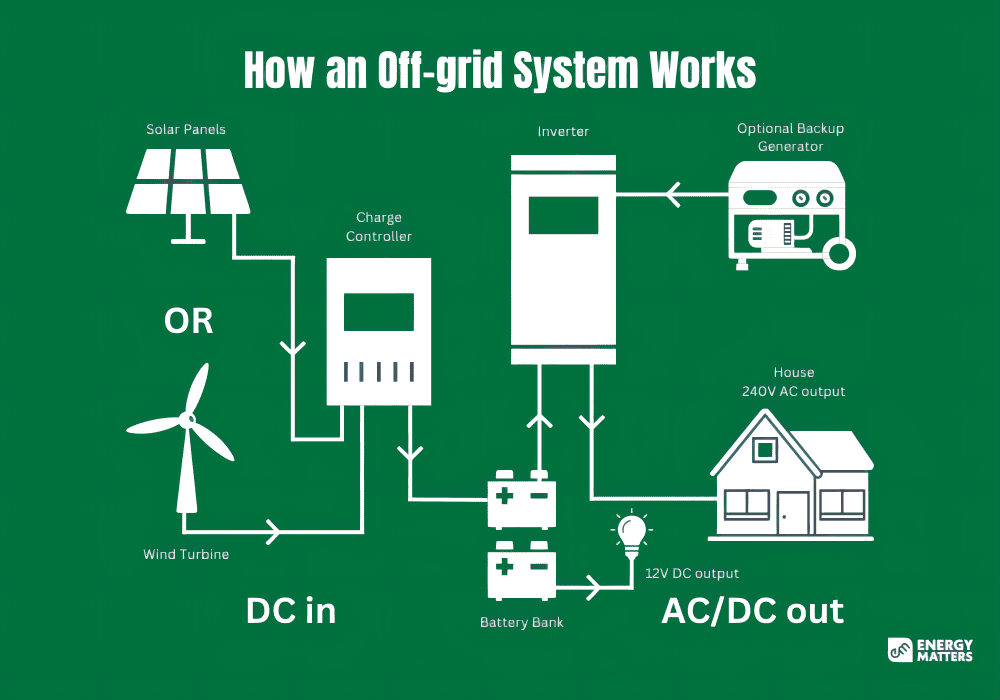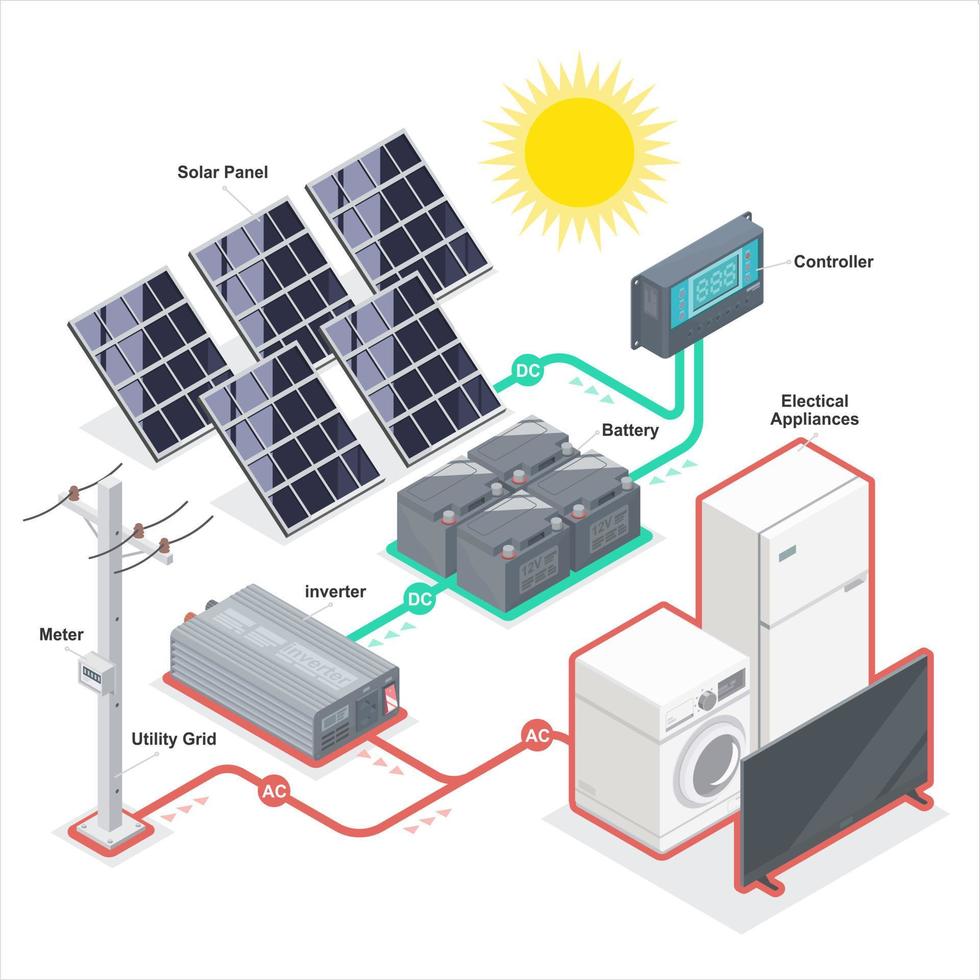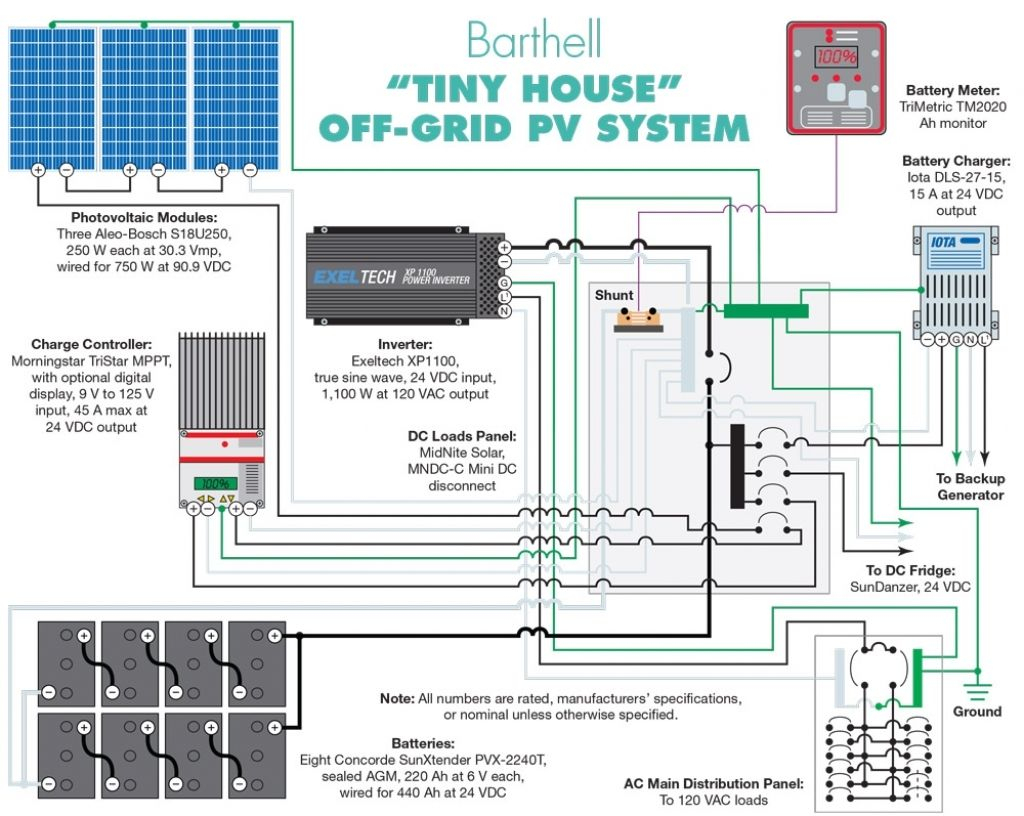How To Wire An Off-grid Solar Power System
“How to wire an off-grid solar power system”
An off-grid solar power system allows you to generate your own electricity from the sun’s energy and store it for later use, providing independence and energy security.
Wiring an off-grid solar power system requires careful planning, attention to detail, and a solid understanding of electrical components and safety protocols. In this article, we will provide a comprehensive guide on how to wire an off-grid solar power system, including the necessary components, safety considerations, and step-by-step instructions.
Components of an Off-Grid Solar Power System
Before we dive into the wiring process, let’s take a look at the essential components of an off-grid solar power system:
- Solar Panels: These are the photovoltaic (PV) panels that convert sunlight into direct current (DC) electricity.
- Charge Controller: This device regulates the flow of energy from the solar panels to the battery bank, preventing overcharging and ensuring safe operation.
- Battery Bank: A collection of deep cycle batteries that store excess energy generated by the solar panels for later use.
- Inverter/Charger: This device converts DC power from the battery bank into alternating current (AC) power for use in your home or business.
- AC Panel: A distribution panel that routes AC power from the inverter/charger to your electrical loads.
- Grounding Equipment: A grounding system that connects the solar power system to the earth, ensuring safety and protecting against electrical shock.
- Disconnects: Manual disconnects that allow you to isolate the solar power system for maintenance and repair.

Safety Considerations
Before starting the wiring process, it’s essential to consider the following safety protocols:
- Electrical Shock: Always assume that electrical components are live, even when turned off. Use personal protective equipment (PPE) such as gloves and safety glasses to prevent electrical shock.
- Fire Hazard: Keep the wiring area clean and clear of flammable materials to prevent fires.
- Grounding: Ensure that all components are properly grounded to prevent electrical shock and equipment damage.
- Overcurrent Protection: Use fuses or circuit breakers to protect against overcurrent conditions that can cause fires or damage to equipment.


Wiring the Off-Grid Solar Power System
Now that we’ve covered the components and safety considerations, let’s move on to the wiring process:
Step 1: Connect the Solar Panels
- Begin by connecting the solar panels to the charge controller. Use MC4 connectors or equivalent to ensure a secure and weather-tight connection.
- Connect the positive (+) terminal of the solar panel to the positive terminal of the charge controller.
- Connect the negative (-) terminal of the solar panel to the negative terminal of the charge controller.
Step 2: Connect the Charge Controller to the Battery Bank
- Connect the positive (+) terminal of the charge controller to the positive terminal of the battery bank.
- Connect the negative (-) terminal of the charge controller to the negative terminal of the battery bank.
- Ensure that the charge controller is set to the correct battery type (e.g., flooded, AGM, or lithium) and configure the charging parameters according to the manufacturer’s instructions.
Step 3: Connect the Battery Bank to the Inverter/Charger
- Connect the positive (+) terminal of the battery bank to the positive terminal of the inverter/charger.
- Connect the negative (-) terminal of the battery bank to the negative terminal of the inverter/charger.
- Configure the inverter/charger to the correct battery type and charging parameters.
Step 4: Connect the Inverter/Charger to the AC Panel
- Connect the output of the inverter/charger to the AC panel.
- Ensure that the AC panel is rated for the maximum output of the inverter/charger.
- Connect the neutral and ground wires from the inverter/charger to the neutral and ground buses in the AC panel.
Step 5: Connect the Grounding Equipment
- Connect the grounding equipment to the solar power system components (e.g., solar panels, charge controller, battery bank, and inverter/charger).
- Ensure that the grounding system is connected to the earth, using a grounding rod or equivalent.
Step 6: Connect the Disconnects
- Connect the disconnects to the solar power system components (e.g., solar panels, charge controller, battery bank, and inverter/charger).
- Ensure that the disconnects are easily accessible and clearly labeled.
Step 7: Test the System
- Test the solar power system to ensure that it’s functioning correctly.
- Check the voltage and current output of the solar panels, charge controller, and inverter/charger.
- Verify that the system is generating power and charging the battery bank.
Conclusion
Wiring an off-grid solar power system requires careful planning, attention to detail, and a solid understanding of electrical components and safety protocols. By following the steps outlined in this article and considering the safety protocols, you can successfully wire an off-grid solar power system that provides reliable and efficient energy for your home or business.
Remember to always follow local electrical codes and regulations, and consult with a licensed electrician if you’re unsure about any aspect of the wiring process. With a properly wired off-grid solar power system, you can enjoy the benefits of renewable energy and reduce your reliance on the grid.
Additional Tips and Considerations
- Monitor the System: Regularly monitor the solar power system to ensure that it’s functioning correctly and optimize its performance.
- Maintain the System: Perform regular maintenance tasks, such as cleaning the solar panels and checking the battery water levels, to ensure the system’s longevity.
- Upgrade the System: Consider upgrading the system as technology advances and new components become available.
- Consider Energy Efficiency: Optimize energy efficiency by using energy-efficient appliances and lighting to minimize energy consumption.
- Backup Power: Consider installing a backup power source, such as a generator, to provide power during extended periods of cloudy weather or system downtime.
By following these tips and considering the safety protocols, you can enjoy a reliable and efficient off-grid solar power system that provides energy independence and reduces your carbon footprint.
